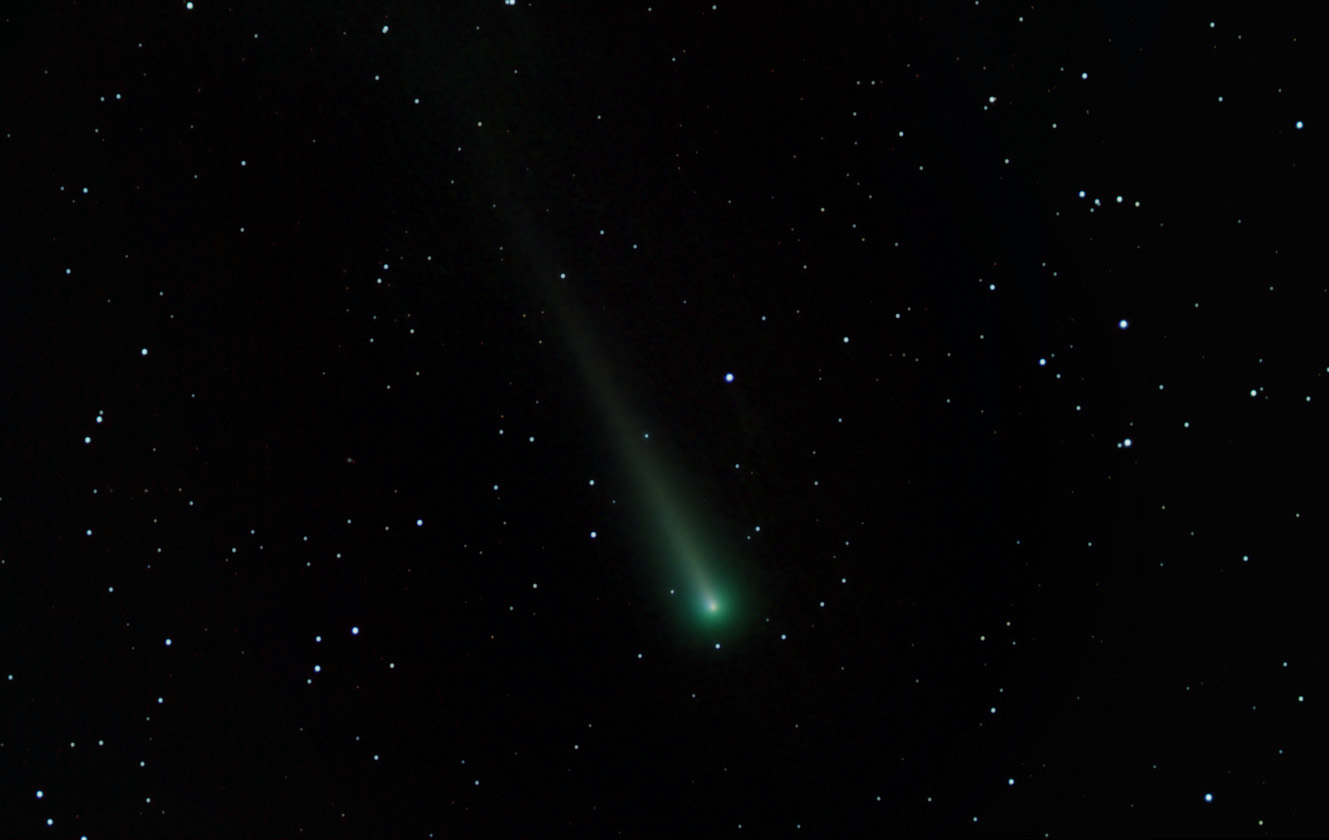
When comet C/2012 S1 (ISON) was discovered, it was abnormally bright for a comet located beyond the orbit of Jupiter. If it had brightened as expected, the comet would have become the comet of the century, and exceeded the show put on in 1997 by Comet Hale-Bopp. However, the comet did not live up to expectations, and had not even reached naked eye visibility at the beginning of November. At the time this image was taken, this comet was on its way to its closest approach to the Sun on November 28, 2013. The comet will pass extremely close to the Sun at perihelion, and there is a chance that it will disintegrate when exposed to the intense heat of such a close solar encounter. If the comet survives its close brush with the Sun, the comet may become very bright in the morning sky just before dawn.
This comet was discovered on September 21, 2012 by Vitali Nevski and Artyom Novichonok of the International Scientific Optical Network ("ISON"). At its closest approach to the Sun, the comet will pass within 730,000 miles of its surface. At that extremely close distance, the comet temperature is expected to soar to 3600 degrees F. If the comet does not break apart at the time of its close rendezvous with the Sun, it could emerge into the dawn sky in early December 2013 and put on a great show.
This image is an RGB color composite CCD image taken with an STL-11000M CCD using a 6-inch Explore Scientific ED152CF refractor telescope at f8. The image was taken from my backyard in Scottsdale, Arizona.
Constellation: Leo
RA:11h 25m 42s Dec:+04d 37' 16" (J2000)
November 3, 2013 at 0500 U.T.
Image by Sid Leach
Scottsdale, Arizona
Recent Images.
Complete list of images.
Description of equipment used to acquire images.
Home
Feedback and comments should go to Sid